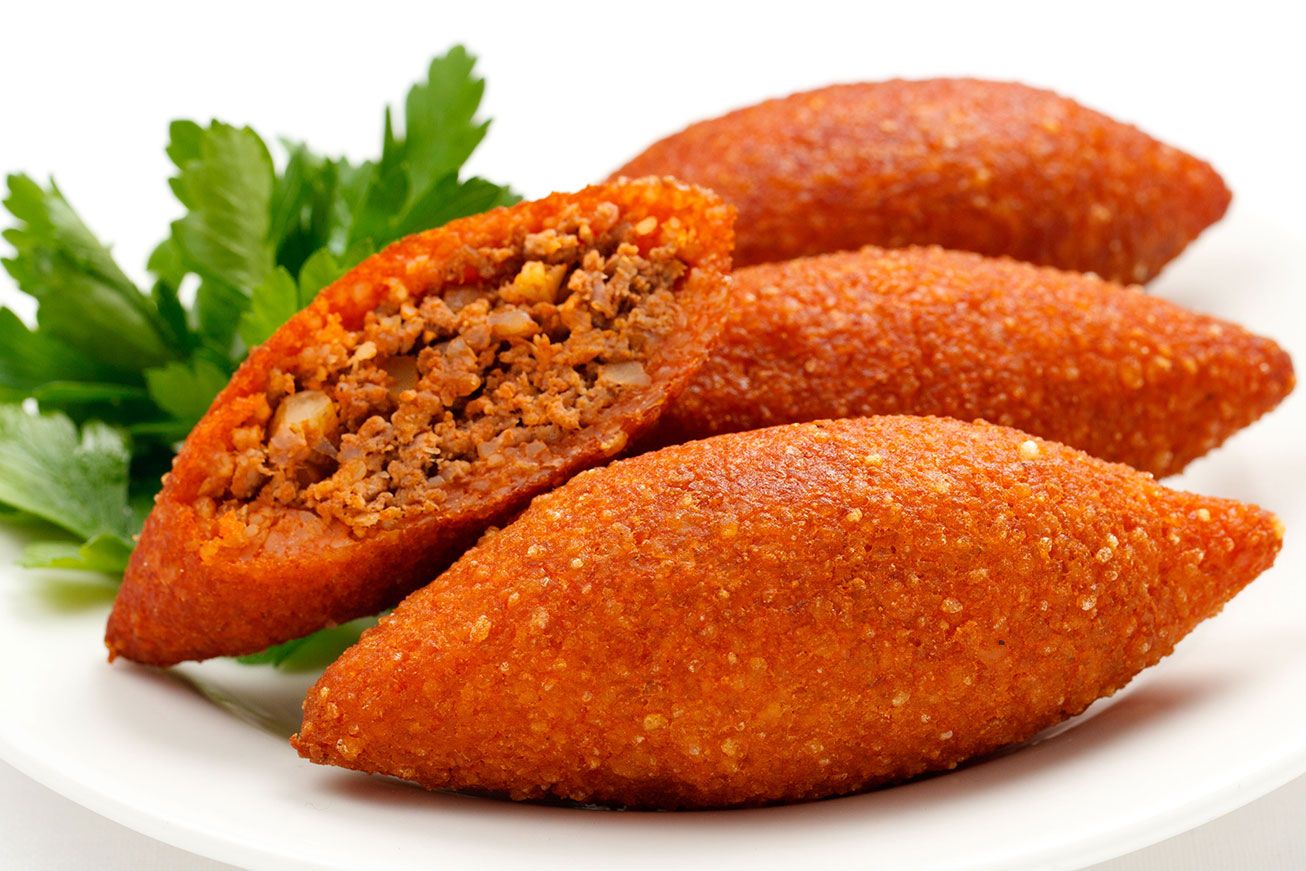If you look carefully, you will find many hidden places on İstiklal street. Some of them are, for good reasons, better to be avoided. But there is also that other kind: places, that should be visited by everyone truly excited about food. So if you walk up to the last floor of an ordinary building in the middle of İstiklal street, you will end up in a cosy restaurant filled with enormous number of flowers. Your effort to climb up the stairs will be rewarded not only with the breathtaking view of the whole street – you will also get an opportunity to taste one of the delicacies of the Ottoman Cuisine, içli köfte.
 İçli köfte, “covered meatball”, is a traditional Anatolian dish. But we can also find it under the different name, which better reflects the special purpose it has – Mother-in-law meatballs. Why? Because in some Anatolian regions, mother-in-law serves this dish to a new bride to “seal her lips with discretion” – lips of the bride should be sealed, in the same way as the outside layer of the içli köfte.
İçli köfte, “covered meatball”, is a traditional Anatolian dish. But we can also find it under the different name, which better reflects the special purpose it has – Mother-in-law meatballs. Why? Because in some Anatolian regions, mother-in-law serves this dish to a new bride to “seal her lips with discretion” – lips of the bride should be sealed, in the same way as the outside layer of the içli köfte.
Story of içli köfte starts, unsurprisingly, with a köfte. Name itself originated from the Farsi world küfte or kofta, both refering to “finely minced, pounded meat.” In its beginning, köfte was not a noble meal – Ottoman Cuisine wanted to make use of off-cuts, so mincing and making balls out of them seemed like a great (and tasty) idea. Even though in these days different kinds of minced meat were common all over Turkey and the Middle East, since 15th century, köfte had become a prominent dish of Ottoman Cuisine.
 One of the most important changes in köfte making came in the 19th century – machine mincer. Easy way to make a köfte and its low price made from it an easy and affordable meal. But something else happened during that period too – Ottoman Palace kitchen got inspired from South – Eastern regions of Turkey – and that was the time when içli köfte appeared.
One of the most important changes in köfte making came in the 19th century – machine mincer. Easy way to make a köfte and its low price made from it an easy and affordable meal. But something else happened during that period too – Ottoman Palace kitchen got inspired from South – Eastern regions of Turkey – and that was the time when içli köfte appeared.
İçli köfte consists of two parts – inside and outside. Outer part is made out of bulgur (cracked wheat), while inside is filled with a mixture of goat or beaf meat, walnuts, onion and chilly or pepper spices. The tricky thing about içli köfte is the preparation. First you have to boil the bulgur, shape it into small “bowls” and stuff it with filling. Then you face the most demanding step of the cooking process – sealing it and giving your içli köfte its right shape (since the shape is one the the most important features of this dish, you should not neglect it). And that is it! If you are skilful (or lucky) enough, you should have a perfect shaped içli köfte in the end (and supertasty, too).
With içli köfte, the situation is very similar as with almost every meat dish in Turkey – there are several kinds (you can for example choose between fried and boiled one). But differences also appear when it comes to the filling – it can be used not only various spices, but sometimes even absolutely different ingrediences for the inside, like cheese or spinach.
